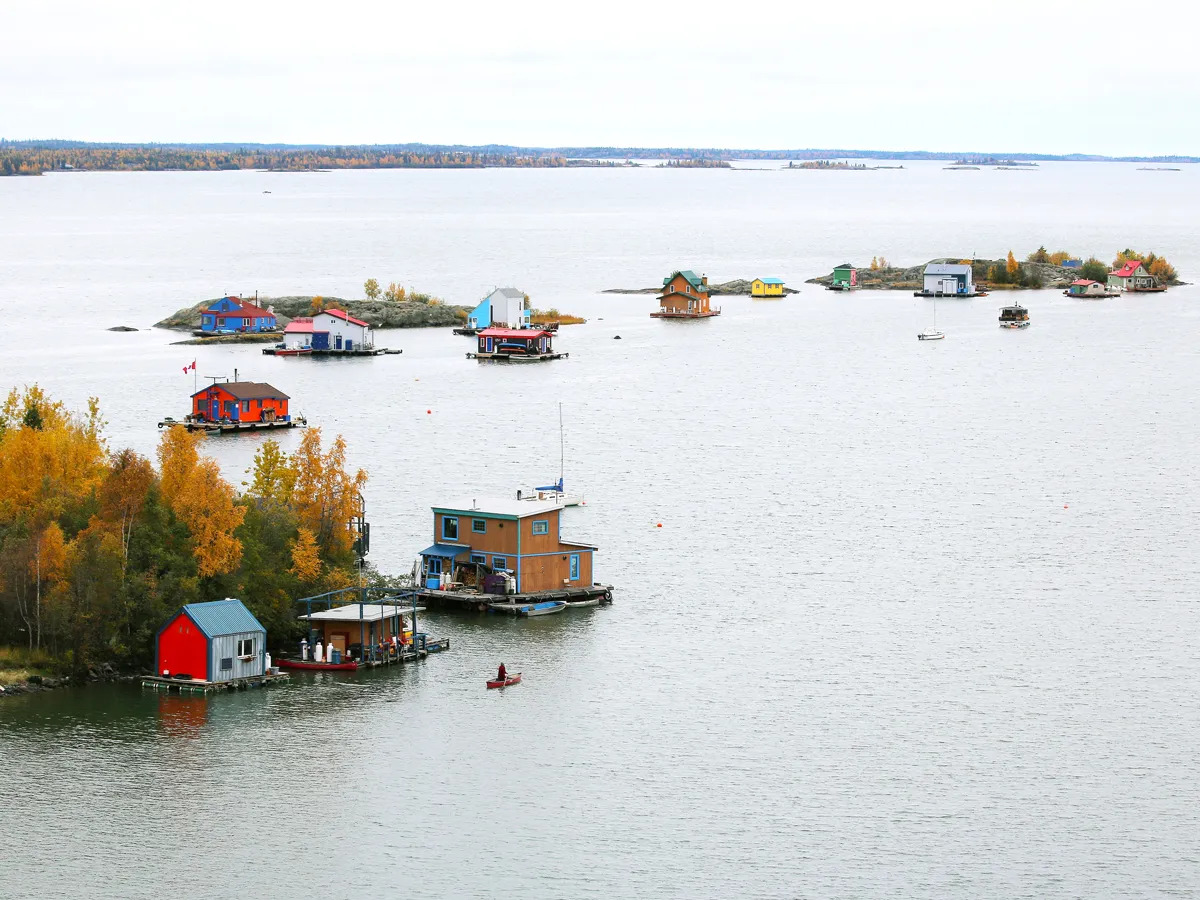Scientists estimate that there are over 300 million lakes worldwide. These bodies of water, surrounded by land, can be either freshwater or saltwater. They vary in size, from small pools to vast inland seas, and support diverse ecosystems. Lakes can be found in high mountains, near seashores, and arid deserts. In addition to providing drinking water and supporting fisheries, lakes also offer countless recreational opportunities, such as boating, hiking, fishing, and sailing. Are you curious which of these lakes stand out from the pack? Below, discover where to find the 10 largest lakes in the world.
10. Great Slave Lake – Canada

Size: 11,030 square miles
The second-largest lake located entirely in Canada, Great Slave Lake is also the deepest lake in North America, plunging to a maximum depth of over 2,000 feet. The first known record of the lake, which is located in Canada’s Northwest Territories, was a 1767 drawing by two Chipewyan First Nations peoples. It takes its name from the Slavey Dene peoples, an Indigenous group who speak the Slavey language.
Today, the shores of Great Slave Lake are home to five bustling communities where over half of the Northwest Territories population lives. Yellowknife, the largest city, was established during a 1930s gold rush around Yellowknife Bay. Kayaking, sailing, and paddleboarding are popular activities on the lake, and there’s also world-class fishing on the lake’s East Arm and North Arm. Come winter, Great Slave Lake freezes over and is the setting for festivals such as the Hay River Pond Hockey Tournament and SnowKing Winter Festival.
9. Lake Malawi – Malawi, Mozambique, and Tanzania
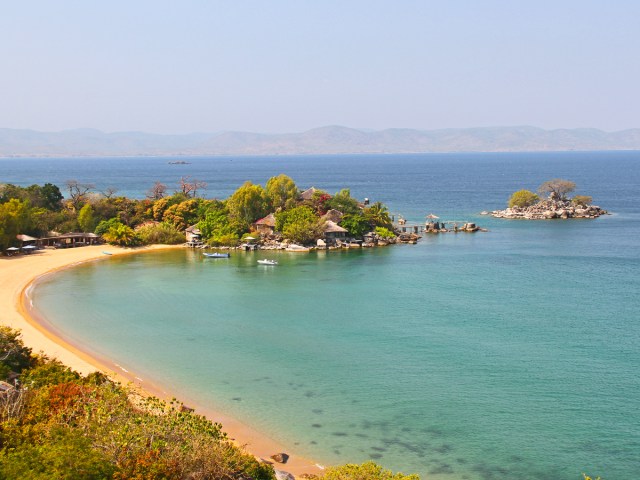
Size: 11,429 square miles
Shared between Malawi, Mozambique, and Tanzania, Lake Malawi (also known as Lake Nyssa or Lago Niassa) is the third-largest lake in Africa. It boasts a huge fishing industry, employing 56,000 fishers and supporting the livelihoods of around 1.6 million people. The waters are inhabited by an estimated 800 to 1,000 fish species. Of the 350 species of mbuna fish, 345 are endemic to the lake. It’s a vital habitat for cichlids, too, the majority of which are also endemic to Lake Malawi. The southern end of the lake forms Lake Malawi National Park, a UNESCO World Heritage Site.
Among the most-loved spots for tourism activities is Malawi’s Cape Maclear, which falls within the national park. Here, visitors can find sandy beaches along with kayaking, snorkeling, and diving tours. On the eastern shores, Nkhotakota is the gateway to Nkhotakota Wildlife Reserve. It’s Malawi’s oldest and largest wildlife reserve — home to 320 bird species, hundreds of elephants, and large herds of game animals such as buffalo and impala.
8. Great Bear Lake – Canada
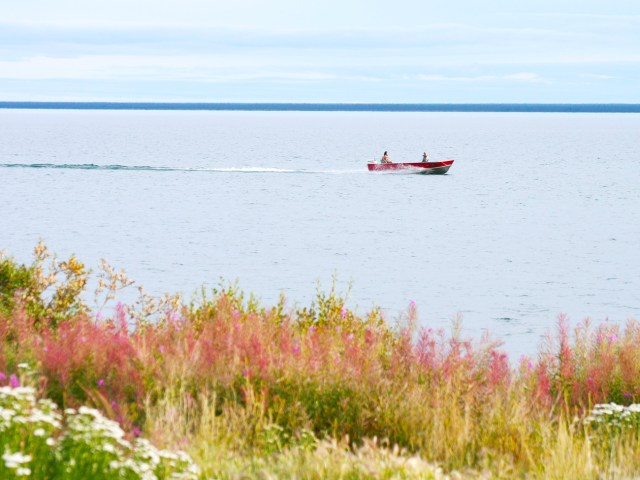
Size: 12,096 square miles
Crossed by the Arctic Circle in the remote Northwest Territories, Great Bear Lake is the largest lake entirely in Canada. It’s the traditional home of the Sahtú Dene peoples, in addition to the Inuvialuit, Kitikmeot Inuit, and Tłı̨chǫ communities. The lake’s name is thought to originate from the Chipewyan phrase “sa tue dene,” which translates to “grizzly bear water people.” Besides the village of Délı̨nę and a few smaller settlements, the lake is sparsely inhabited. Summers, which are bathed in the midnight sun, are short, and the lake is rarely free of ice.
Despite its remote location and harsh weather conditions, Great Bear Lake is popular for trout fishing and renowned for some of the world’s biggest catches. Délı̨nę is the starting point for most activities around the lake. Cultural tours with Dene elders shed light on the community’s heritage and traditions, including medicine, beadwork, and caribou hide-making.
7. Lake Baikal – Russia
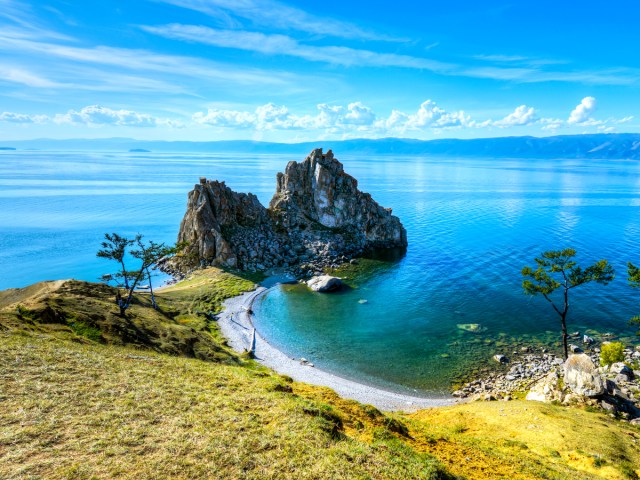
Size: 12,200 square miles
Located in eastern Siberia, Lake Baikal is the deepest lake in the world, plunging to depths of over 5,300 feet. It holds one-fifth of the planet’s total unfrozen freshwater reserve, making it the largest freshwater lake in the world. When Lake Baikal is compared to other countries, it’s slightly larger than Belgium.
Formed approximately 20 million to 25 million years ago, Lake Baikal is one of Earth’s oldest lakes, too. Its waters and surroundings provide a habitat for thousands of animal species, including around 2,000 bird species and 58 fish species. Remarkably, almost two-thirds of the lake’s plants and animals, such as the Baikal dolphin, are endemic.
The Baikal Nature Reserve is one of the best places to experience the wildlife and nature up close. While travel to Russia is currently not possible for U.S. citizens, attractions around the lake include ice skating in winter, riding the scenic Circum-Baikal Railway, and visiting rugged Olkhon Island.
6. Lake Tanganyika – East Africa
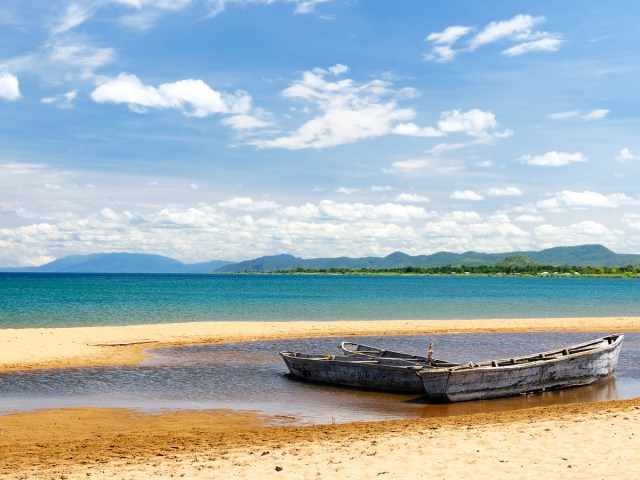
Size: 12,700 square miles
Lake Tanganyika is the longest freshwater lake in the world and the second-deepest lake, reaching 4,700 feet below the surface due to a sheer coastline created by East Africa’s Great Rift Valley. Spanning the countries of Burundi, the Democratic Republic of Congo, Tanzania, and Zambia, Lake Tanganyika is known for its unique biodiversity and over 350 fish species, including the goliath tigerfish and great and small Nile perch. As such, the area is a popular destination for sport fishing.
Many of Tanganyika’s marine animals are also endemic, with 98% of its cichlids found nowhere else on Earth. Although crocodiles inhabit much of the shoreline, Mpulungu, a lakefront town in northern Zambia, is a favorite swimming spot. Visitors can also check out Tanzania’s Gombe Stream National Park for a chance to see chimpanzees.
5. Lake Michigan – United States
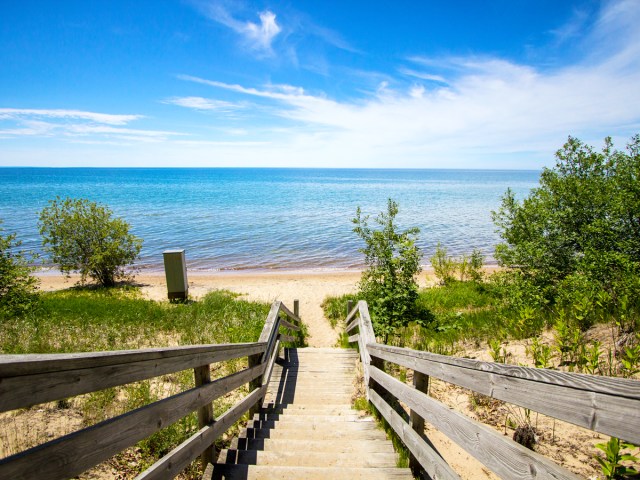
Size: 22,300 square miles
The third-largest of the Great Lakes, Lake Michigan is the only one of the five lakes located entirely in the United States. Over 12 million people live along its shores, in both small towns and big cities such as Chicago, Green Bay, and Milwaukee. The lake’s ecosystem supports everything from fruit orchards and forests to savannas, tallgrass prairies, and wetlands.
Near the northeastern corner of Lake Michigan, Sleeping Bear Dunes National Lakeshore is home to the largest freshwater dunes on Earth. Wildlife also thrives here, including 140 bird species.
Meanwhile, spanning the Straits of Mackinac — which connects Lake Michigan with Lake Huron — is the 5-mile-long Mackinac Bridge, one of the world’s longest suspension bridges. Another area of interest for visitors is the Indiana Dunes National Park, one of the country’s most biologically rich national parks.
4. Lake Huron – Canada and the United States
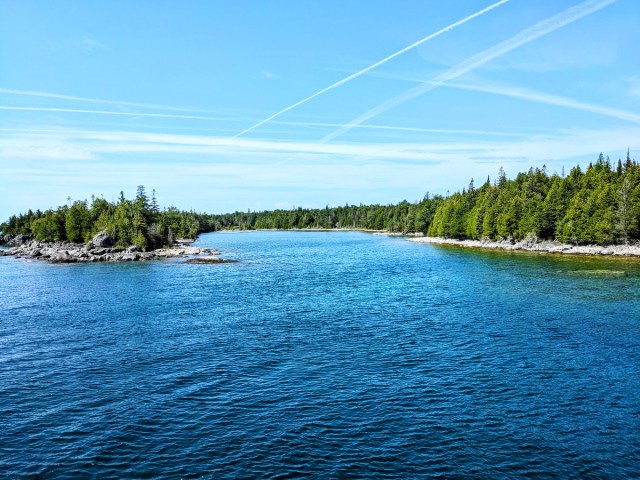
Size: 23,000 square miles
Only slightly smaller than the state of West Virginia, Lake Huron is shared by Michigan and Canada’s Ontario province. Huron, one of the top 10 largest lakes in the world, provides drinking water, outdoor recreation, and employment opportunities to some 3 million people in both the U.S. and Canada. It also has the longest shoreline — 3,827 miles — of all of the Great Lakes.
Visitors will find plenty to explore along beaches such as the 7-mile-long Sauble Beach and 8.7-mile Wasaga Beach. There are also approximately 30,000 islands in Lake Huron, including the popular Benjamin Islands.
The lake’s eastern section is called Georgian Bay, and it shelters the shipwreck-filled Fathom Five National Marine Park. According to Ojibwe legend, a dragonlike panther called Mishipeshu inhabits its deep waters.
3. Lake Victoria – Kenya, Tanzania, and Uganda
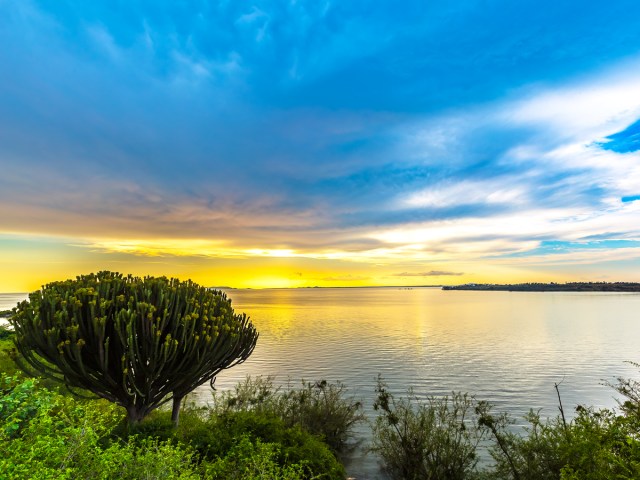
Size: 26,828 square miles
The source of the Nile, the world’s longest river, Lake Victoria is Africa’s largest lake and the world’s largest tropical lake. Shared by three countries in the continent’s southeastern region, it was formed around 400,000 years ago. English explorer John Hanning Speke arrived here in 1858 and named the lake after Queen Victoria of the United Kingdom.
Historically a trade route for local communities, Lake Victoria continues to support the regional economy through both industry and tourism. It’s home to the world’s largest freshwater fishery, providing employment for approximately 200,000 people. It also has several dams that generate hydroelectricity. Pristine beaches line the lake’s 2,137-mile coastline, most notably Uganda’s Ssese Islands.
2. Lake Superior – Canada and the United States

Size: 31,700 square miles
Its name is no accident: Lake Superior is the mightiest of North America’s Great Lakes and the world’s largest freshwater lake, home to 10% of the world’s fresh surface water. Superior’s meandering 2,725-mile-long shoreline borders Ontario and the states of Michigan, Minnesota, and Wisconsin.
Formed by volcanic activity about a billion years ago, the lake has long been a vital migration route for Indigenous groups and European settlers. But not all journeys reached their destination: An estimated 350 ships have run aground or sunk in Lake Superior’s waters, with half still undiscovered.
Today, the lake is a hot spot for kayaking, fishing, and swimming. Isle Royale National Park occupies a wilderness archipelago in the middle of the lake, with its lakes and superb scuba diving.
1. Caspian Sea – Eurasia
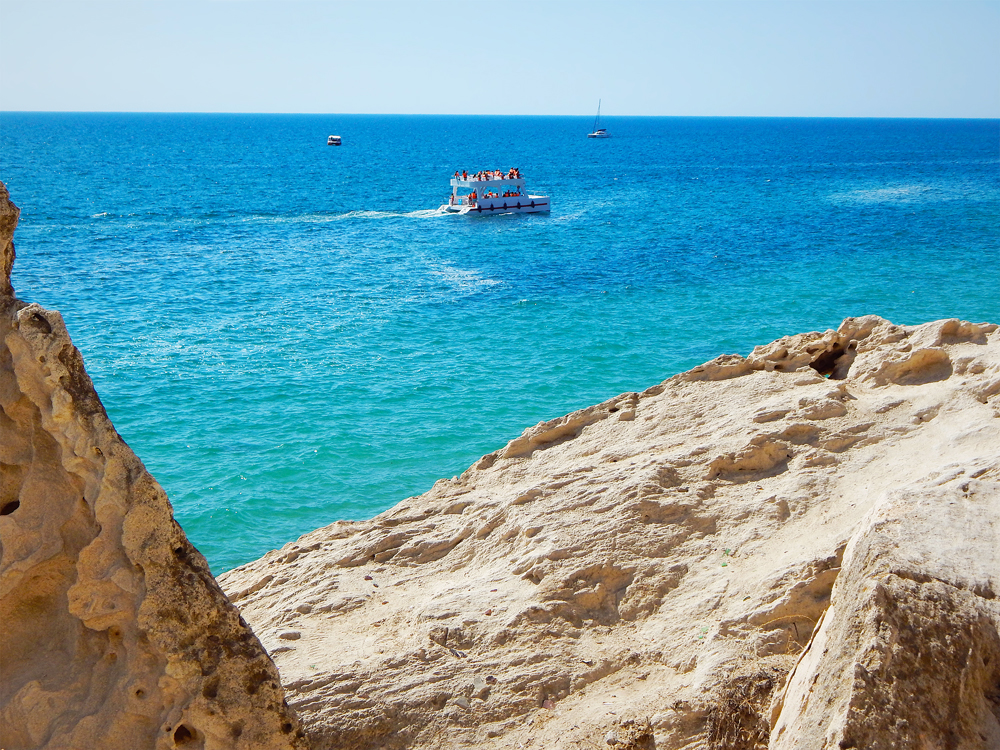
Size: 143,200 square miles
Though it’s called a sea, the Caspian Sea is the world’s largest inland body of water, occupying an area roughly equivalent to that of Germany or Japan.
Set between five countries (Azerbaijan, Iran, Kazakhstan, Russia, and Turkmenistan) in Eastern Europe, the Caspian Sea takes its name from the ancient Caspi peoples who once inhabited the region. Until around 11 million years ago, it was connected to both the Black Sea and the Mediterranean Sea.
Exhibiting both freshwater and saline characteristics, the Caspian Sea has rich biodiversity and shelters several unique species. One of these is the sturgeon fish, which is prized for producing caviar. Around its shores are bustling cities such as Aktau, Kazakhstan, and Baku, Azerbaijan, along with coastal destinations including Chalus Beach and Ramsar Beach in Iran.


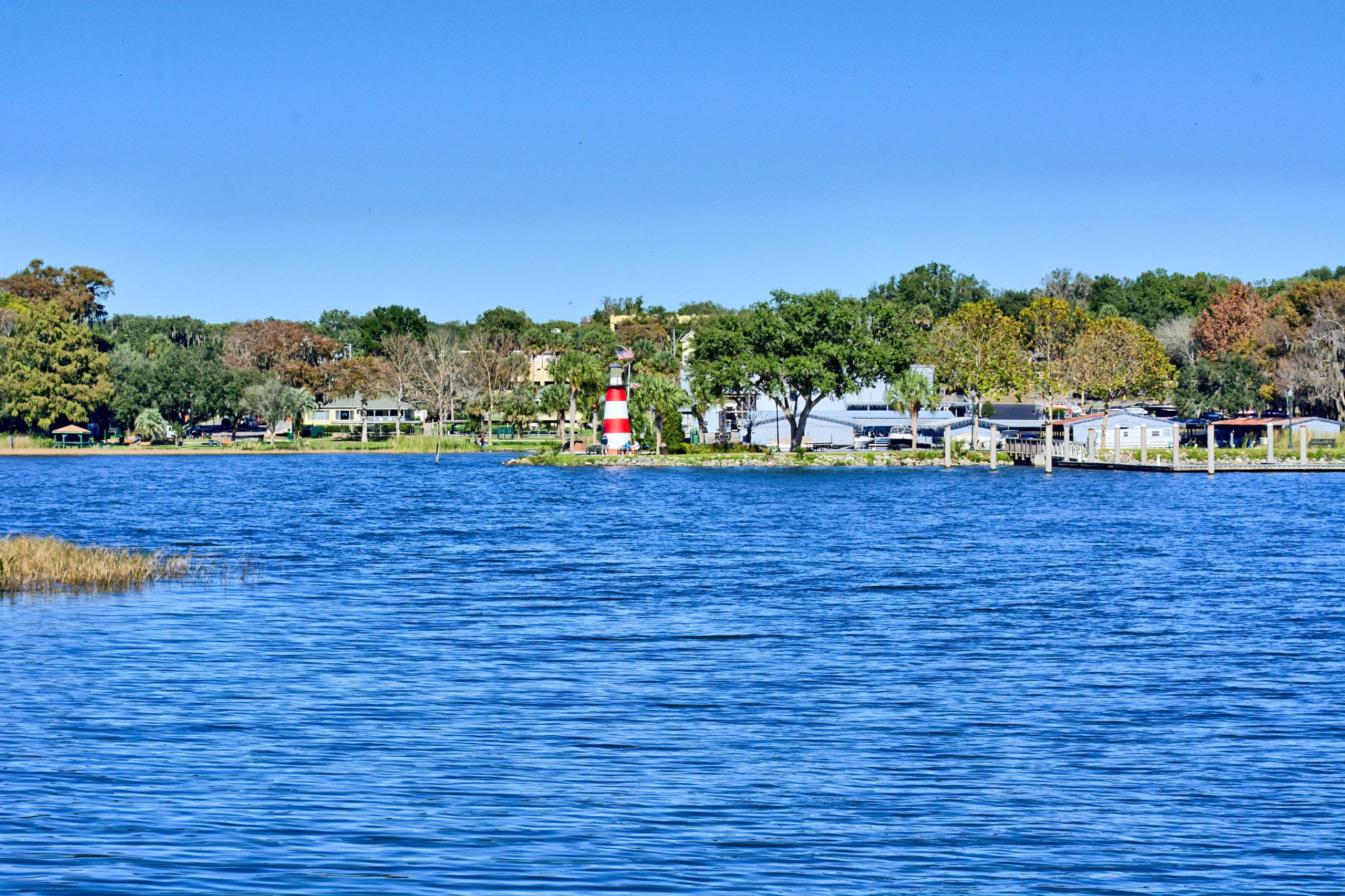
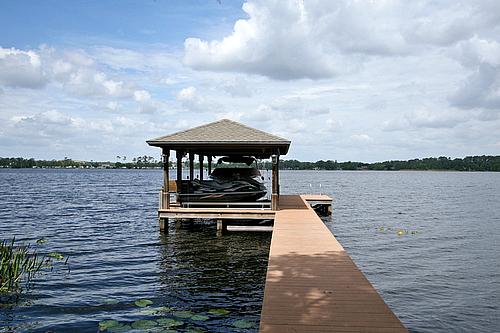
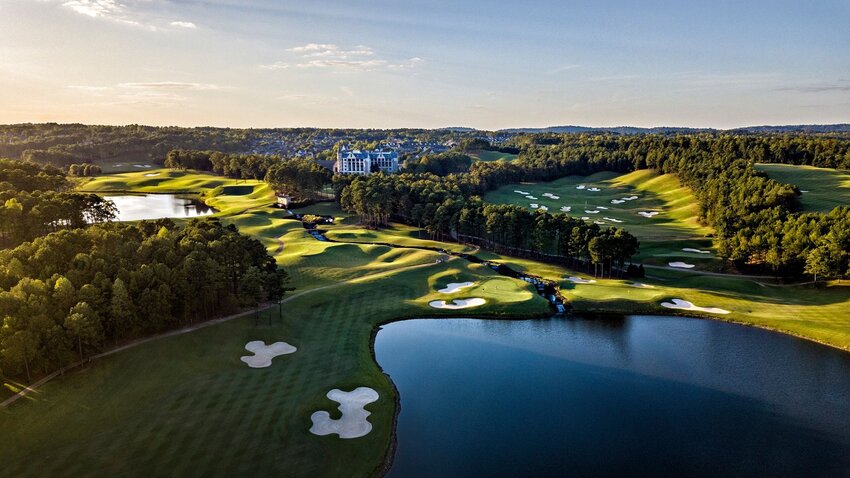
Allyn Maycumber Broker/Associate ERA Grizzard Mount Dora Florida 32757 407-467-3862
email: Amaycumber@eragrizzard.com

 Facebook
Facebook
 X
X
 Pinterest
Pinterest
 Copy Link
Copy Link
